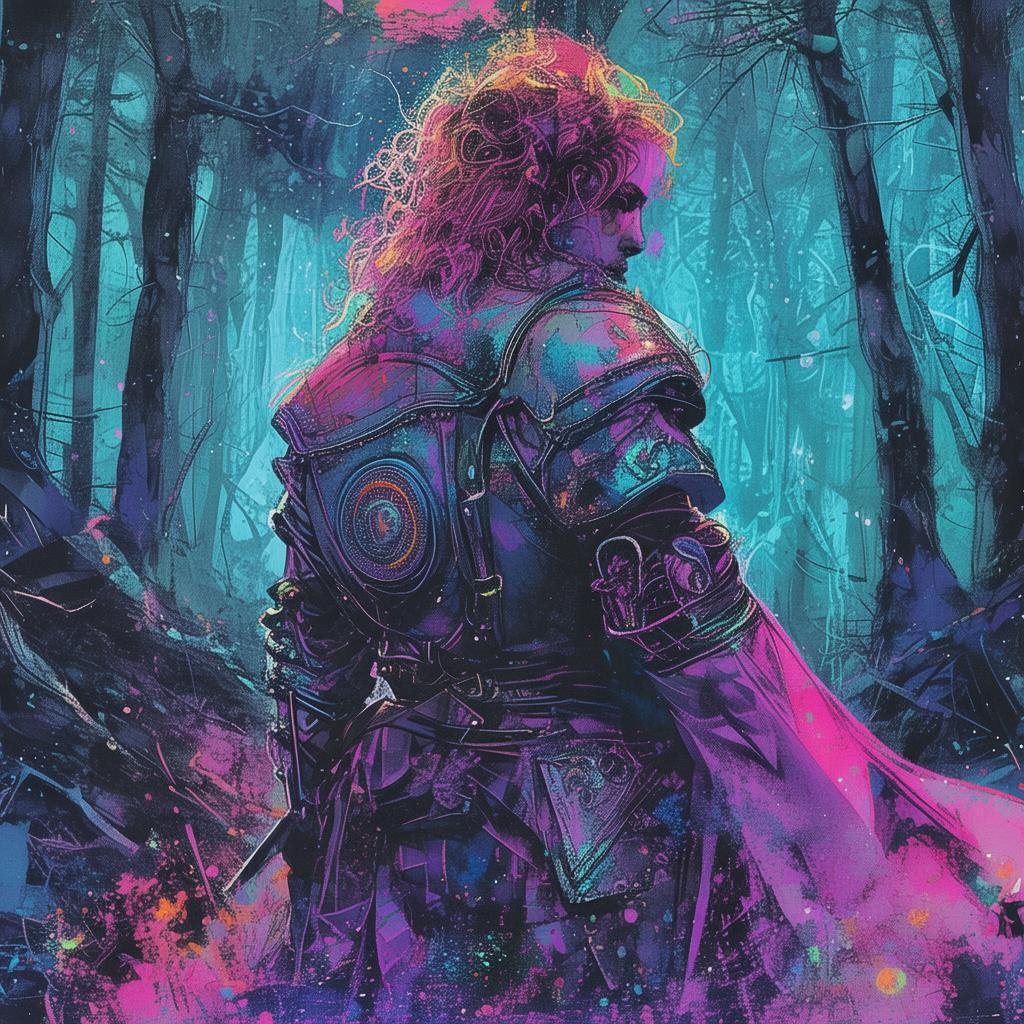The Strings of Eternity: Paganini's Curse
In the heart of the 19th century, the legend of Paganini's violin had already begun to take on a life of its own. The instrument was said to possess a soul, an essence that could not be confined to the mere wood and strings that composed its body. It was said that the violin itself was a vessel of magic, capable of summoning spirits and bending the very fabric of reality. This was the story of a violin, a composer, and a curse that would change the world forever.
The violin had once belonged to a humble tailor named Giuseppe Tartini, who, after a chance encounter with a mysterious figure, had his world turned upside down. Tartini had heard a haunting melody that seemed to be playing itself in his mind, a symphony of such beauty that it could only have been the work of some divine being. The melody was so powerful that it transformed Tartini's life, leading him to become one of the greatest violinists of all time. The violin, now known as the Tartini, had been imbued with an enchantment that allowed it to produce a sound that could transport its listener to otherworldly realms.

It was during the twilight of Tartini's life that the violin was passed to the hands of Niccolò Paganini, a virtuoso violinist whose talent was said to be supernatural. Paganini was a man of many contradictions. He was a master of the instrument, yet he was also a man who sought forbidden knowledge and power. It was said that Paganini's violin was the source of his extraordinary abilities, that it had a soul that could communicate with spirits, and that it held the key to an ancient curse.
The curse was as old as the violin itself, a spell woven by a sorcerer who had sought to bind the souls of the departed to his will. The sorcerer had imbued the violin with the ability to capture the essence of the soul, to hold it in thrall and use it for his own gain. The violin had become a tool of dark magic, a conduit for the sorcerer's dark power.
Paganini, who had once been a mere mortal, found himself under the spell of the violin's enchantment. The violin's soul called to him, urging him to perform at his highest potential, to compose music that would resonate with the very essence of the universe. But as he delved deeper into the violin's magic, Paganini began to realize that the price of his talent was steep. The violin's curse demanded a heavy toll, and Paganini's soul was slowly being consumed by its dark magic.
The story of Paganini's violin reached its climax during a performance in which he played a symphony that was said to have been composed by the spirits themselves. The audience was mesmerized by the music, their souls drawn into the ethereal realm that the violin had conjured. But as the music reached its crescendo, the spirits turned against Paganini, and he found himself trapped in the very world he had created.
The violin's curse was now complete. It had bound Paganini's soul to its strings, and he was forced to play the symphony of his own demise, a symphony that would resonate through eternity. The violin's magic had become a curse, a relentless force that would not be denied.
As the years passed, the violin passed through the hands of many, each one trying to break the curse, to free Paganini's soul. But the curse was strong, and the violin's magic was real. Each attempt to break the curse only seemed to strengthen it, and the violin's soul continued to call out to its master, demanding his eternal performance.
In the present day, a young violinist named Elena discovered the violin in an old, abandoned attic. She was drawn to it by the same enchantment that had once captivated Tartini and Paganini. Elena felt a strange connection to the instrument, as if it were calling to her in some ancient language. She began to play, and the violin's soul responded, weaving a new symphony, one that was not of death but of hope.
Elena realized that the violin's curse was not a force to be feared, but a gift to be cherished. She saw the potential in the violin's magic, not as a source of dark power, but as a tool for healing and enlightenment. She began to compose a new symphony, one that would break the curse and free Paganini's soul.
The symphony was performed in a grand hall, filled with violinists from around the world. As Elena played, the violin's soul was released, and Paganini's spirit emerged, thanking Elena for her courage and her love. The violin's curse was finally broken, and its magic was returned to the world.
The Strings of Eternity: Paganini's Curse was a tale of love, loss, and redemption. It was a story of the power of music to transcend the boundaries of time and space, and of the courage it takes to face one's darkest fears. The violin, once a tool of dark magic, had become a symbol of hope and light, and its magic would continue to inspire musicians for generations to come.
✨ Original Statement ✨
All articles published on this website (including but not limited to text, images, videos, and other content) are original or authorized for reposting and are protected by relevant laws. Without the explicit written permission of this website, no individual or organization may copy, modify, repost, or use the content for commercial purposes.
If you need to quote or cooperate, please contact this site for authorization. We reserve the right to pursue legal responsibility for any unauthorized use.
Hereby declared.









